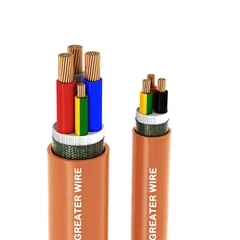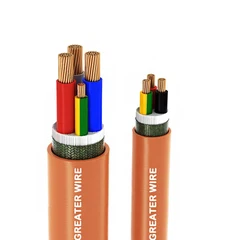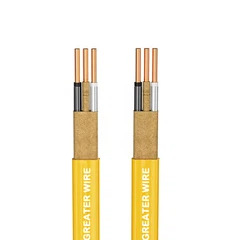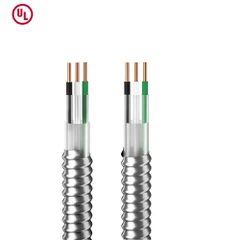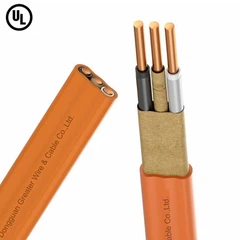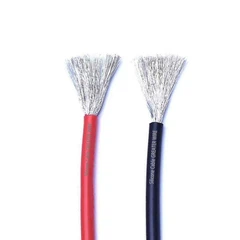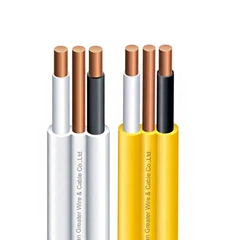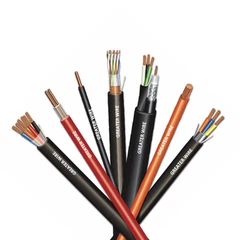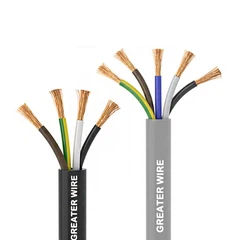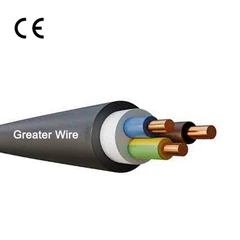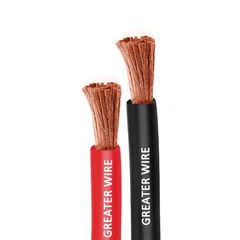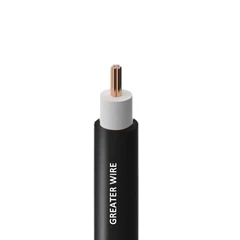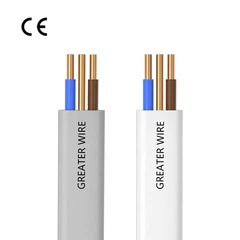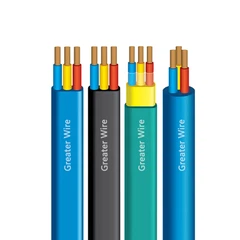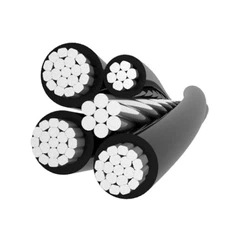In power engineering, mining construction, municipal distribution, and industrial installations, the choice of cable and installation method directly determines the safety and reliability of the power system. In projects where space is limited, environments are complex, or long-distance transmission is required, underground installation is a widely adopted solution.
However, one common question often arises: Can elastomeric cables be directly buried underground?
This article provides a detailed analysis based on material properties, regulatory standards, practical cases, and customer requirements. It also offers a systematic selection guide to help contractors, engineers, and end users choose the best solution.
What Is an Elastomeric Cable?
Elastomeric cables are high-performance cables insulated and sheathed with elastomeric materials such as EPR (Ethylene Propylene Rubber) or CPE (Chlorinated Polyethylene). Their greatest advantage lies in their flexibility and ability to maintain stable electrical performance under frequent bending and movement. This makes them widely used in mining, ports, temporary power supply, construction sites, and heavy machinery.
Common elastomeric materials:
- EPR (Ethylene Propylene Rubber) – Excellent resistance to heat, aging, and moisture.
- CPE (Chlorinated Polyethylene) – Flame-retardant, oil-resistant, and chemically resistant.
- Other synthetic elastomers – Designed to balance flexibility with mechanical strength.
Key advantages of elastomeric cables:
- Flexibility – Ideal for mobile and frequently bent applications.
- Weather resistance – Withstand UV, humidity, and extreme temperatures.
- Abrasion resistance – Suitable for harsh working environments.
- Flame retardancy – Enhance fire safety.

Can Elastomeric Cables Be Directly Buried?
The answer depends on the cable type, sheath thickness, and installation environment.
- Heavy-duty elastomeric cables (e.g., EPR insulated, mining cables): With thick sheaths and high mechanical strength, they are suitable for direct burial.
- Light-duty portable cables (e.g., H07RN-F): While highly flexible, their thinner sheaths make them vulnerable to long-term underground exposure. These are best installed in conduits.
- Medium-voltage elastomeric cables: Designed with thick sheaths and robust structures, they are well-suited for direct burial and comply with AS/NZS standards.
In short: Not all elastomeric cables are suitable for direct burial. Proper selection is critical.
Consequences of Direct Burial (Without Proper Cable or Protection)
If the wrong type of elastomeric cable is directly buried, or if installation is improper, the risks include:
1.Mechanical damage – Soil pressure or stones can cut into the sheath.
2.Insulation aging – Moisture accelerates insulation degradation.
3.Chemical corrosion – Acidic or alkaline soils may cause cracking.
4.Supply interruption – Buried cable failures are costly and difficult to repair.
Thus, for underground projects, only cables designed for direct burial should be used, often with additional protective measures if needed.

Technical Considerations for Underground Installation
In Australia, New Zealand, and Oceania markets, buried cables must comply with AS/NZS 3008 and related standards. Key factors include:
1.Mechanical strength – Can the sheath withstand soil pressure?
2.Moisture resistance – Can the cable resist long-term water exposure?
3.Chemical resistance – Will the sheath withstand acidic/alkaline soils?
4.Thermal performance – Underground cables dissipate heat poorly, requiring correct sizing.
5.Maintenance feasibility – Choose cables with long service life since repairs are difficult.
Installation Precautions for Elastomeric Cables
Even when using elastomeric cables rated for burial, correct installation practices are essential:
1.Burial depth – Minimum 0.6m to avoid surface activity damage.
2.Sand bedding – 100mm of sand above and below the cable to prevent sharp damage.
3.Warning tape – Placed ~300mm above the cable to prevent accidental excavation.
4.Waterproof joints – Use sealed joint boxes to keep out moisture.
5.Additional protection – In high-risk areas, use armored cables or HDPE conduits.
6.Regular testing – Insulation resistance and partial discharge testing for long-term reliability.
Choosing the Right Elastomeric Cable
| Model | Cross Section (mm²) | Voltage Rating | Direct Burial Suitability | Typical Applications |
|---|---|---|---|---|
| H07RN-F | 1.5 – 35 | 450/750V | Recommended with conduit | Portable power, equipment |
| EPR Insulated Cable | 1.5 – 240 | 0.6/1kV | Suitable for direct burial | Municipal power, outdoor lighting |
| Medium Voltage Elastomeric Cable | 35 – 400 | 6/11kV, 22kV | Suitable for direct burial | Power plants, distribution |
| Mining Cable | 16 – 300 | 1.1 – 11kV | Highly suitable for burial | Mines, heavy machinery |
| VSD Cable | 2.5 – 95 | 0.6/1kV | Conduit recommended | VSD drives, motor control |
How to Select the Correct Cable Type
1.Environment – Underground, wet, or corrosive soils.
2.Voltage & load – Correct sizing per design.
3.Sheath material – Weatherproof, oil-resistant, UV-resistant.
4.Extra protection – Armoring or conduits if required.
5.Compliance – Must carry SAA certification and meet AS/NZS standards.

Our Product and Service Advantages
Product Range – Full coverage of: Orange Circular Cable, TPS Cable, Medium Voltage Cable, VSD Cable, Fire Rated Cable, Elastomer Cable, Heavy Duty Cable, Ordinary Duty Cable, Mining Cable, Neutral Screen Cable, Instrumentation Cable.
Regional Compliance – Designed for Australia, New Zealand, and Oceania.
Complete Specifications – Elastomeric cables from 1.5mm² upward, full standard range.
Fast Delivery – Bulk or small batch orders supported, quick shipment.
Service Excellence – Professional technical support, worry-free pre- and after-sales service.
Global Partnerships – Years of export experience, partners worldwide.
Certified Quality – All cables carry SAA certification.
Customization Options – Material, size, length, color, performance, marking, packaging – fully customizable.
Typical Application Cases
- Municipal Lighting – EPR sheathed cables directly buried for street lighting.
- Mining Projects – Mining cables as main underground feeders.
- Ports and Harbors – Medium-voltage elastomeric cables for cranes and buried power systems.
- Commercial Complexes – Armored cables buried to ensure reliability.
why Customers Choose Us
- Professional end-to-end technical support regardless of project size.
- One-stop service from cable selection to after-sales support.
- Proven global export experience, trusted worldwide.
Contact Us
Dongguan Greater Wire & Cable Co., Ltd.
📞 Tel/WhatsApp/Wechat: +86 135 1078 4550 / +86 136 6257 9592
📧 Email: manager01@greaterwire.com

